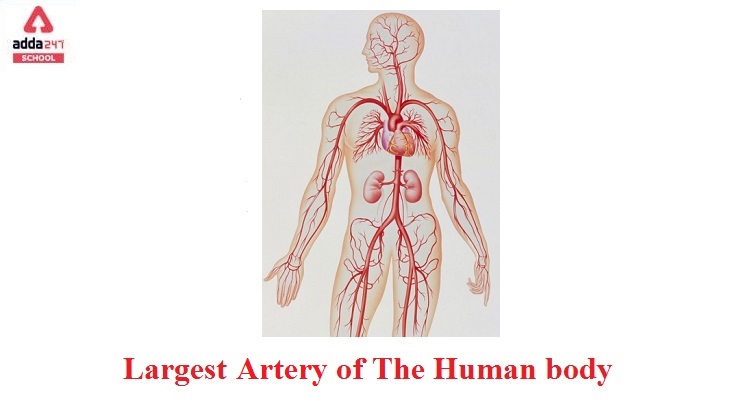Largest Artery in the Body
Largest Artery in the Human Body- Know all about it. The Aorta is the body’s one of the major arteries and is the largest artery in the body. The aorta, the body’s largest artery, is made up of several layers. The largest artery in the body, Aorta, carries oxygen-rich blood from the heart’s left ventricle to various regions of the body.
Read About RNA
Largest Artery in Human Body
The blood channels that transport oxygen-rich blood from the heart to the body’s tissues are known as arteries. Arteries are blood arteries that transport blood away from the heart and to the body’s organs and tissues.
Each artery is made up of three layers:
- The intima is the inner layer of the artery, which is bordered by endothelium, a smooth tissue.
- The media is a layer of muscle that allows arteries to withstand the heart’s high pressures.
- The adventitia is a connective tissue that connects the arteries to the tissues around them.
Read About BCG Vaccine
Largest Artery in the Human Body: Aorta and its structure
The aorta, which exits the heart’s left ventricle and connects the heart’s left ventricle to the main high-pressure pipeline, is the largest artery.
The aorta splits into a network of smaller arteries that go all over the body. The brachiocephalic artery, left carotid artery, and left subclavian artery are all major branches of the aorta. As they pass through the upper arm, the subclavian arteries merge with the brachial arteries, which supply the radial and ulnar arteries. The aorta gives rise to the renal arteries, which serve the kidneys, and the superior and inferior mesenteric arteries, which subsequently serves the big and small intestines, respectively in the belly. The aorta splits into two iliac arteries as it approaches the pelvis. The internal and external iliac arteries branch off from the common iliac arteries. When it leaves the pelvis, the external iliac artery is known as the femoral artery, and when it reaches behind the knee, it is known as the popliteal artery. The anterior and posterior tibial arteries rise from the popliteal artery.
Read About: Food Chain
Largest Artery in the body: Aortic Dissection for Human
The aorta is made up of multiple layers. Aortic dissection occurs when a tear forms in the aorta’s inner layer, allowing blood to flow between the layers. When the layers split, blood flow is disrupted, and the artery wall may burst. Aortic dissection is a life-threatening emergency that may necessitate emergency surgery to repair or replace the injured aorta segment.
Read About: DNA
Largest Artery in the Human Body: Aortic Aneurysm
An aortic aneurysm is a bulging or abnormal expansion of the aorta’s wall. An aneurysm can form in any part of the circulatory system. Treatment may be required once an aneurysm has been diagnosed, depending on the size of the aneurysm. Aneurysms that have burst require immediate surgery to halt the bleeding.









 RBSE Class 10 Model Paper 2026 Out, Down...
RBSE Class 10 Model Paper 2026 Out, Down...
 RBSE Class 12 Model Paper 2026 for Arts,...
RBSE Class 12 Model Paper 2026 for Arts,...
 SLAT Preparation 2026: Tips and Subject ...
SLAT Preparation 2026: Tips and Subject ...














